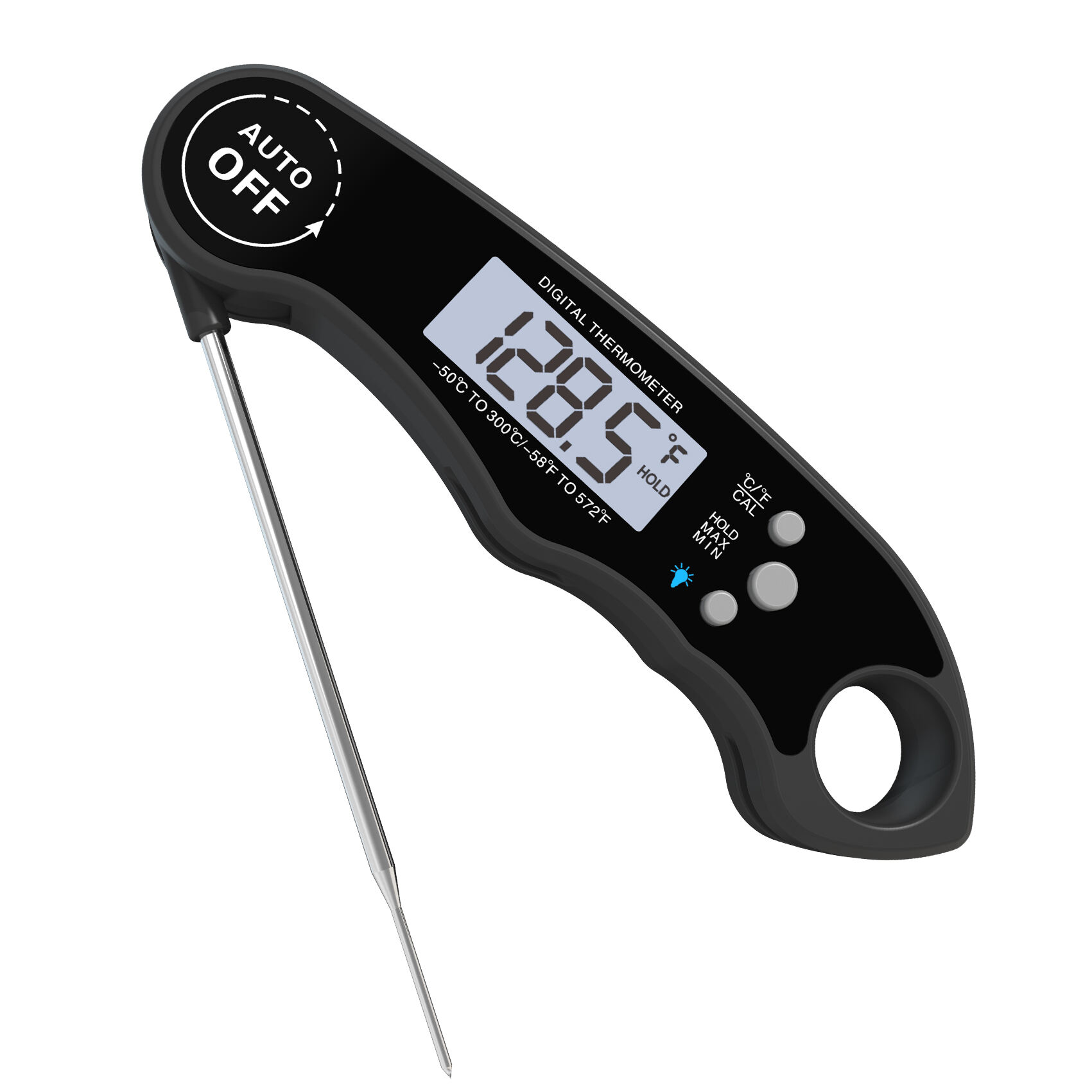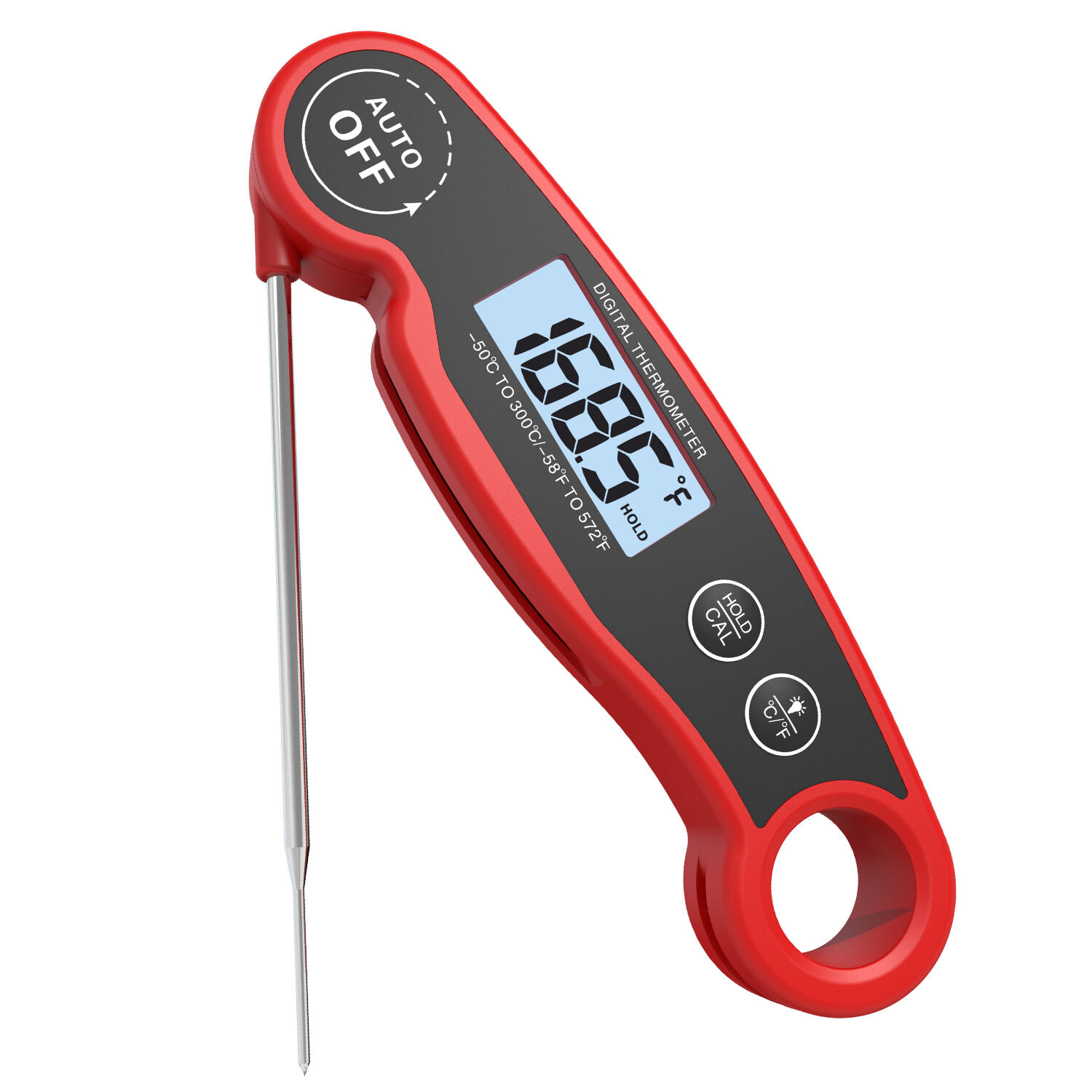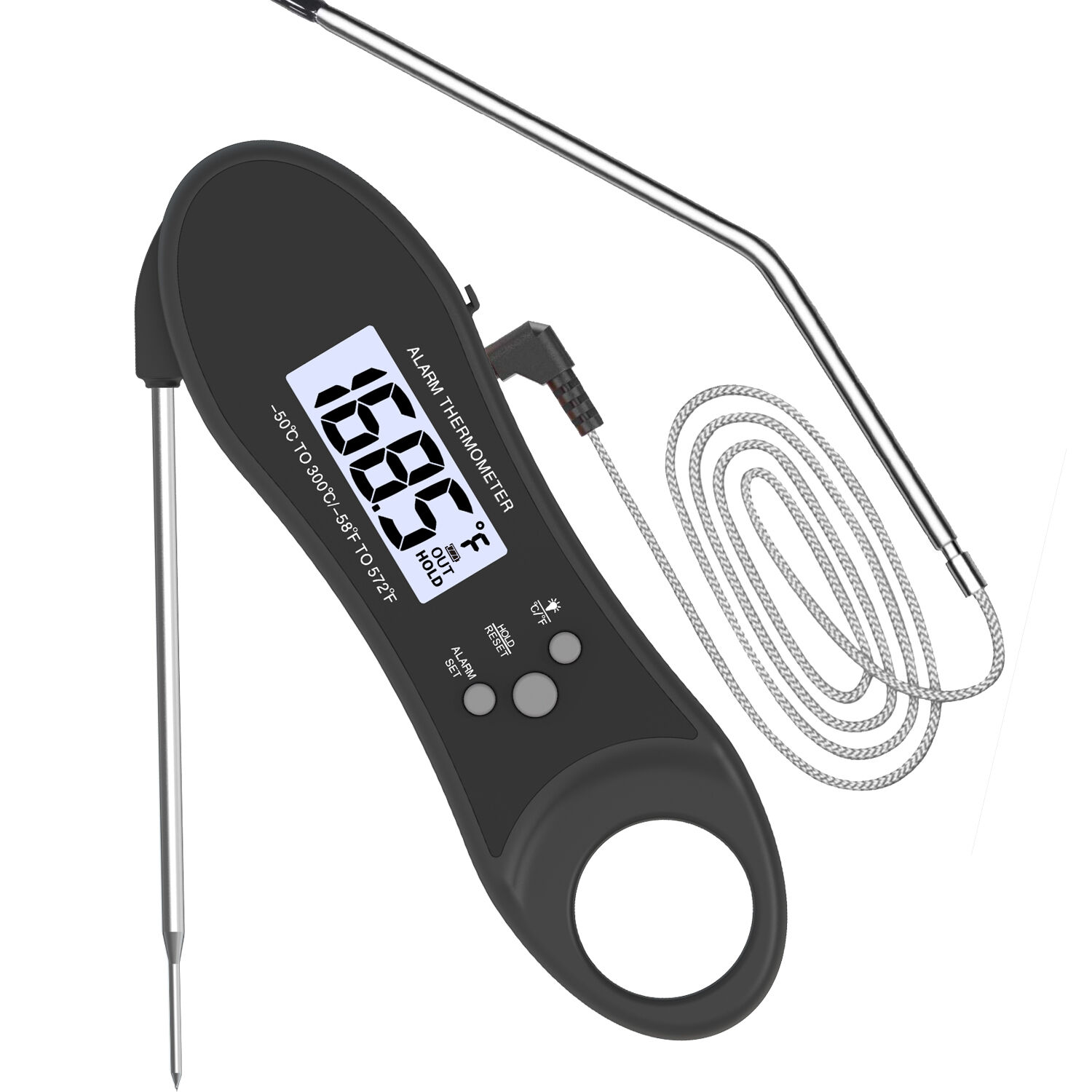IP ratings, or Ingress Protection ratings, are crucial in understanding the durability and safety of food thermometers in commercial kitchen environments. These ratings indicate the device's ability to resist intrusion from foreign bodies like dust and water. Levels such as IP65 and IP67 are particularly relevant to food thermometers, with IP67 offering a higher level of protection against water immersion. Comprehending these IP ratings is vital, not only for ensuring the safety of kitchen operations but also for extending the lifespan of the equipment. By selecting thermometers with appropriate IP ratings, kitchens can better safeguard their operations and investments.
Understanding the distinction between waterproof and water-resistant is essential when selecting kitchen appliances like thermometers. While waterproof devices can withstand complete submersion in water, water-resistant ones can only repel limited moisture exposure. In commercial kitchens, scenarios such as frequent washdowns or accidental splashes make waterproof designs critical. Choosing between waterproof and water-resistant models has significant implications for food safety and equipment reliability. Opting for waterproof thermometers often ensures uninterrupted functionality, reducing contamination risks and maintenance needs.
In commercial kitchens, stringent cleaning protocols require devices that can withstand repeated exposure to water and sanitizing agents. Waterproof thermometers provide a significant advantage by preventing moisture damage and maintaining hygiene standards. These thermometers can be easily cleaned without compromising their functionality, ensuring they remain reliable over time. For instance, many businesses have experienced prolonged device lifespans and reduced maintenance costs by using waterproof thermometers. The investment in such equipment not only aids hygiene but also supports operational efficiency, making it highly beneficial in hectic kitchen environments.
Foldable probes offer significant benefits in optimizing space, especially in busy commercial kitchens. With the demands of high-volume cooking, every square inch of storage becomes crucial. The folding design of these thermometers allows them to be stored compactly, reducing clutter and maximizing efficiency. Compared to traditional thermometers, which tend to be bulkier, foldable thermometers save valuable drawer or shelf space. A study on kitchen storage revealed that innovative design, like folding probes, can free up to 30% more storage area, a substantial benefit for bustling culinary environments. This improvement in space utilization not only enhances accessibility but also contributes to a tidier, more organized kitchen, ensuring that tools are readily available when needed.
Stainless steel is known for its durability, and when used in foldable probes, it offers robust characteristics that ensure long-term usage in demanding kitchen environments. The inherent strength of stainless steel helps prevent wear and tear, making foldable thermometers a reliable choice for chefs who need precision and durability. These probes are often designed to withstand regular folding and unfolding without compromising their structural integrity. Manufacturers provide evidence that stainless steel probes maintain performance over extended use, surviving high temperatures and frequent handling without degradation. This durability means that chefs can trust these tools for consistent accuracy and reliability over time, making them a valuable asset in any kitchen setting.
In commercial cooking environments, the need for rapid temperature readings is crucial for maintaining food safety and quality. Foldable probes allow for quick deployment, ensuring chefs can obtain accurate readings swiftly when time is of the essence. For example, during peak service hours or high-volume events, every second counts in ensuring dishes are cooked to perfection without compromising safety. Moreover, real-world scenarios highlight how timer efficiency directly impacts food safety outcomes in professional kitchens. When comparing deployment times, foldable thermometers consistently outperform traditional models, offering instant readiness and reducing lag time. This advantage is pivotal in avoiding delays and keeping up with the fast-paced nature of commercial cooking operations.
Having a reliable thermometer that covers a broad temperature range, such as -50°C to 300°C, is crucial in professional kitchens, supporting diverse cooking techniques from slow roasting to high-heat frying. This wide measurement range ensures one can accurately monitor and adapt to various culinary requirements, mitigating risks related to improper temperature management. Chefs often express frustrations with thermometers that fail to accommodate such a wide spectrum, as it can lead to failures in dish execution. With the right thermometer, cooks can confidently prepare a vast array of dishes with precision, ensuring flavor and safety.
Regular calibration of food thermometers is essential to maintain compliance with industry standards and ensure food safety. Professional kitchens often follow strict protocols for calibration, which require precise and regular checks to guarantee accuracy. Step-by-step, the calibration process involves immersing the thermometer in ice water, followed by boiling water tests, to verify readings against known temperature points. Such accuracy is statistically significant in preventing foodborne illnesses, emphasizing the need for routine attention to calibration as a critical component of kitchen operations. Meeting these standards ensures that cooking practices not only meet taste expectations but prioritize health safeguards.
The response time of a meat thermometer significantly influences food safety during cooking by ensuring prompt temperature readings and preventing spoilage. Faster response times, ideally within two seconds, allow chefs to adjust cooking methods swiftly in response to temperature changes, thus upholding high standards of food safety. For instance, rapid reading capabilities can be vital in preventing the undercooking of poultry, a known risk factor for contamination. Moreover, statistical studies often correlate sluggish thermometer response times with increased instances of food spoilage, underscoring the importance of choosing thermometers with optimized responsiveness. Achieving culinary perfection necessitates not only accurate but expedient temperature monitoring, ensuring safe and delicious outcomes.
In demanding kitchen environments, construction materials play a crucial role in the durability and functionality of meat thermometers. Using heat-resistant ABS housing ensures these devices can endure the intense heat typical in culinary applications. This type of plastic is favored for its ability to withstand high temperatures without deforming, making it an ideal choice for kitchen thermometers. The industry standard for heat resistance, particularly in devices that come into regular contact with hot surfaces, necessitates the use of materials like ABS plastic. Numerous case studies have documented the successful use of ABS housing, where thermometers have continued to perform reliably after exposure to extreme kitchen conditions.
Impact resistance is vital for thermometers used in busy kitchens, where drops and knocks are common. Devices like these must survive frequent falls without compromising their accuracy or integrity. In tests conducted to ascertain the durability of rugged thermometer models, results consistently highlight the robustness of such devices under physical stress. This durability is especially crucial for commercial-grade thermometers, which are subject to the rigors of a fast-paced environment and thus need to be durable and dependable under such pressure.
The inclusion of food-grade 304 stainless steel components in thermometer manufacturing is pivotal for ensuring safety and preventing contamination. Stainless steel resists corrosion, which is fundamental when thermometers come into contact with various food items and liquids. The role of stainless steel in safeguarding against contamination is well-established, as it forms a barrier against harmful bacteria and other pollutants. Evidence supporting the safety and quality of materials like stainless steel often comes from stringent certifications, validating the use of these components in creating safe and high-quality kitchen tools.
Visibility is crucial in low-light commercial kitchens, where precision cooking is essential. Backlit LCD displays on meat thermometers are designed to provide clear readings, ensuring accuracy even in dim environments. Various backlighting technologies, such as LED and electroluminescent, offer different levels of brightness and clarity. Users often praise these displays for their ease of reading, helping them maintain operational efficiency during peak service hours, especially in settings where quick temperature checks are frequent. The ability to read temperatures swiftly and accurately in low light settings minimizes errors and enhances workflow.
Magnetic mounting features on digital thermometers are a game-changer in fast-paced kitchens. This feature allows chefs to attach thermometers to metal surfaces, keeping them within easy reach and reducing the hassle of searching for these tools during busy hours. For instance, a meat thermometer with magnetic capabilities can be placed on a fridge or oven, streamlining the cooking process in bustling environments. Real-life examples showcase how this simple design can boost efficiency by allowing chefs to focus on cooking rather than logistical distractions. For optimal use, consider the layout of your kitchen to decide the best placement for quick access.
Auto-off features in digital meat thermometers are not only convenient but also offer significant energy efficiency. This function turns the device off after a period of inactivity, conserving battery power and extending the thermometer's life. Comparing battery life across various models highlights that thermometers with auto-off capabilities significantly reduce battery waste. For instance, the extensive battery life of the aforementioned models demonstrates how they help in reducing environmental impact. These efficient designs contribute to sustainability by minimizing unused energy consumption, an essential factor for any eco-conscious kitchen operation.
The DT-126 model is a breakthrough in food thermometer technology, offering cutting-edge features for both amateur and professional chefs. This foldable food thermometer boasts an advanced waterproof design, enabling it to withstand accidental submersions in water—an invaluable trait in bustling kitchen environments where spills are commonplace. This model is equipped with a comfort grip handle and a large backlit LCD, ensuring ease of use and optimal visibility in any setting. Compared to previous models and competitive offerings, the DT-126 stands out with its ability to re-calibrate and its built-in magnet for convenient storage on refrigerator surfaces.

For more details, check out the DT-126 New Release Foldable Food Thermometer.
The DT-123 thermometer enhances cooking precision with its ultra-fast response time, making it a reliable companion in any professional kitchen. With a measuring range from -50°C to 300°C, it caters to both chilling and cooking processes, delivering accurate readings within seconds. The device's probe is crafted from food-safe stainless steel, and the case is made from eco-friendly ABS material, offering both safety and durability. Kitchen professionals appreciate its foldable design and superior water resistance, maximizing convenience and longevity in high-demand cooking scenarios.

Gain more insights on the DT-123.
The DT-96 model sets itself apart with its dual probe system and rechargeable functionality, offering a perfect blend of performance and convenience. The thermometer features an impressive IP65 rating, ensuring it is highly waterproof—this is crucial for maintaining hygiene and durability in rigorous culinary environments. Its rechargeable battery offers cost savings over time, highlighting the economic advantages alongside its environmental benefits. Users have specifically noted the efficiency and reliability of the dual probe system, allowing simultaneous monitoring of different food items for optimal cooking outcomes.

Explore the features of the DT-96 Rechargeable Dual Probe Food Thermometer.
Ensuring the accuracy of meat thermometers over time is crucial in any kitchen setting, especially for professionals who rely on precision in their cooking. Calibration involves adjusting and verifying the thermometer's measurements to maintain its accuracy. Here’s a simple step-by-step calibration process:
Each test should yield the expected result—32°F (0°C) for ice water and 212°F (100°C) for boiling water, under normal atmospheric conditions. Calibration should be performed regularly; top kitchen professionals recommend monthly checks to ensure ongoing accuracy. Documenting the historical calibration data helps maintain consistency, providing a reference for adjusting any discrepancies.
Proper battery maintenance is essential for extending the lifespan and ensuring the dependability of folding food thermometers. When replacing batteries, it's crucial to follow guidelines to avoid potential damage:
Controlled battery replacement impacts the digital thermometer's reliability, minimizing the risk of errors and enhancing performance consistency. Common mistakes to avoid include using incorrect battery types or forcing battery compartments open due to misunderstanding their mechanism.
Proper storage practices can significantly extend the life of your meat thermometer, safeguarding sensitive components from damage. Here’s how to store these tools effectively:
By adhering to these recommendations, you ensure the longevity and reliability of digital meat thermometers, both for casual home use and demanding professional environments. Industry experts suggest routine checks of storage conditions to maintain optimal operating standards. Following these protocols is integral to preserving thermometer condition and performance.
 Hot News
Hot News